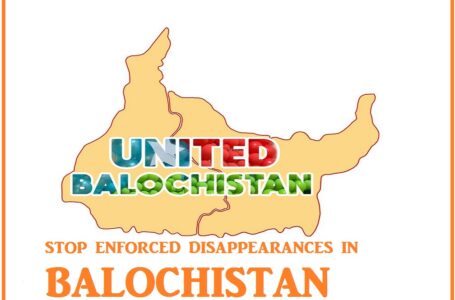The Case for a Free Balochistan: A Catalyst for Regional Stability and Prosperity
U.S. Afghan strategy will be governed by events in Balochistan

The Pentagon is spinning its wheels in Afghanistan, continuing a questionable counterinsurgency and nation-building strategy because, quite literally, it knows that it won’t work, but cannot think of anything else to do.
It will not succeed because the U.S. and NATO will never regain the military dominance the alliance had in the years immediately after the 2001 toppling of the Taliban government, without which negotiations can only occur from a position of weakness.
The U.S. and NATO do not control the operational tempo or the supply of our troops in land-locked Afghanistan. Pakistan and Iran fuel the insurgency, while the former maintains a strangle-hold on supply convoys. Both Russia and China want us out of the region, preferably precipitated by a humiliating defeat.
Raising troop levels and changing tactics on the ground will not improve the unfavorable strategic conditions.
In fact, U.S. policy in Afghanistan is about to be overtaken by events in Pakistan’s southwest province of Balochistan, rendering it obsolete.
And Balochistan is going to get very messy indeed.
In the late 1970s, Pakistan President President Zia-ul-Haq initiated an “Islamization” program, which involved the proliferation of Islamic schools “madrasas” and the promotion of Islamic law “Sharia,” designed to create national unity by suppressing ethnic separatism and religious diversity. That policy set in motion a gradual transformation of Balochstan from a traditionally secular and tolerant region into one virtually overflowing with Islamic fundamentalists.
Thanks to that policy and Pakistan’s use of Islamic terrorist groups as instruments of its foreign policy, the Taliban now have a solid foothold, not only in the Pashtun Belt of Balochistan bordering Afghanistan, but they are recruiting deep into central Balochistan. There are, for example, two madrasas in Nag, Washuk district (map coordinates 27.408153, 65.136318 and 27.414241, 65.126743), run by active members of the Taliban, who send young jihadis to fight U.S. troops in southern Afghanistan. Statistics provided by the Pakistani government estimate that there are more than 5,000 Afghans studying in madrasas in Balochistan, not to mention thousands of Pakistanis undeterred by their government from taking up jihad in Afghanistan. The Taliban will never run out of bodies.
It is important to note that the Taliban do not recognize the present Afghanistan-Pakistan border, defined by the Durand Line, and seek to incorporate Pashtun lands now in Pakistan into a greater Taliban-governed Afghanistan.
Pakistan’s Islamization policy created a fertile environment for the growth of Wahhabism in Balochistan, largely fueled by Saudi Arabia and other wealthy Arab states. Many of those terrorists are transnational, including the Islamic State (ISIS) and virulently anti-Shia groups, such as Jundallah and its offshoot the Salafist Jaish al-Adl, which conduct cross-border attacks on Iran. To counter presumed Saudi attempts to bracket Iran, Iranian intelligence has reportedly both infiltrated and recruited members of separatist groups in western Balochistan opposed to the Pakistani government, a significant development to say the least.
On a collision course with the proliferation of transnational terrorist groups in Balochistan is the China-Pakistan Economic Corridor (CPEC), which is part of China’s larger Belt and Road Initiative, aiming to connect Asia through land-based and maritime economic zones. CPEC is an infrastructure project, the backbone of which is a transportation network connecting China to the Pakistani seaports of Gwadar and Karachi located on the Arabian Sea.
But CPEC is more than a commercial initiative. It is one element of China’s strategy to overtake the U.S. as the world’s foremost superpower. Huge tracks of land in Gwadar for up to 500,000 Chinese professionals have been allocated for port and naval facility development as well as expansion of the international airport to handle heavy cargo flights. The Chinese have visited and bought land in Sonmiani, which houses Pakistan’s spaceport and space research center as well as a planned liquid natural gas terminal.
Chinese military control of Balochistan’s Makran coast would allow Beijing to dominate vital sea lanes leading to the Persian Gulf and link to the Chinese base in Djibouti at the entrance of the Red Sea and the Suez Canal, both strategic choke points.
It is clear that China and Pakistan see a continued U.S. and NATO presence in Afghanistan as an obstacle to CPEC and their strategies for the region.
Concerned about the growing Islamic terrorist threat, there have been a number of meetings on the Pakistan-Iran border near Gwadar in the last few months among Chinese, Iranian and Pakistani officials to discuss security issues.
So, as the Pentagon tweaks its counterinsurgency and nation-building strategy in Afghanistan, just to the south, events in Balochistan are about to make that strategy irrelevant – an explosive mixture of Chinese hegemony, Pakistani and Iranian regional ambitions, transnational Islamic terrorism and a potentially new, Syria-like, Sunni-Shia battleground.
The Pentagon had better check its six o’clock and learn to manage instability.











